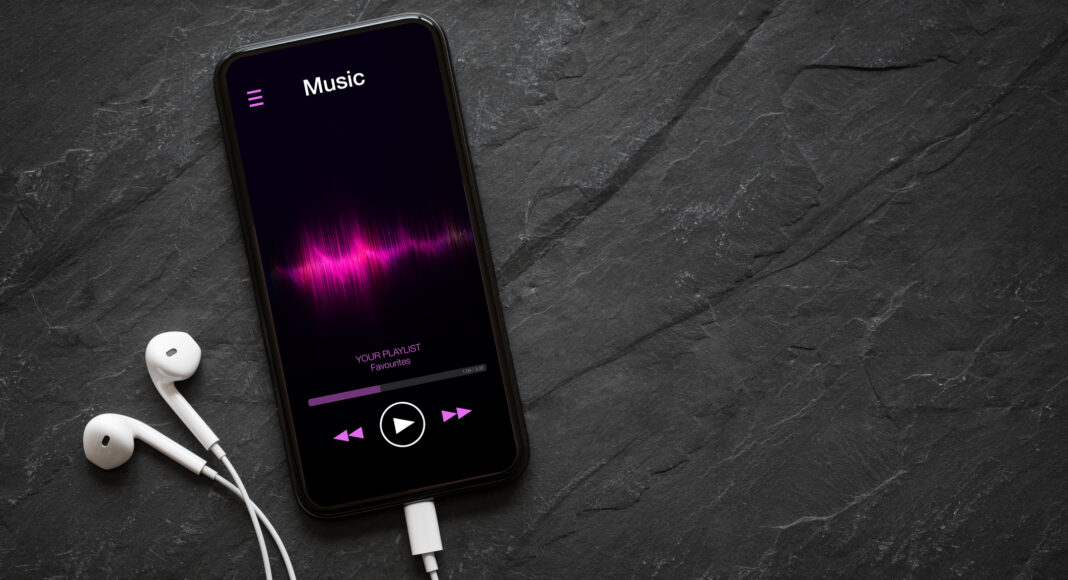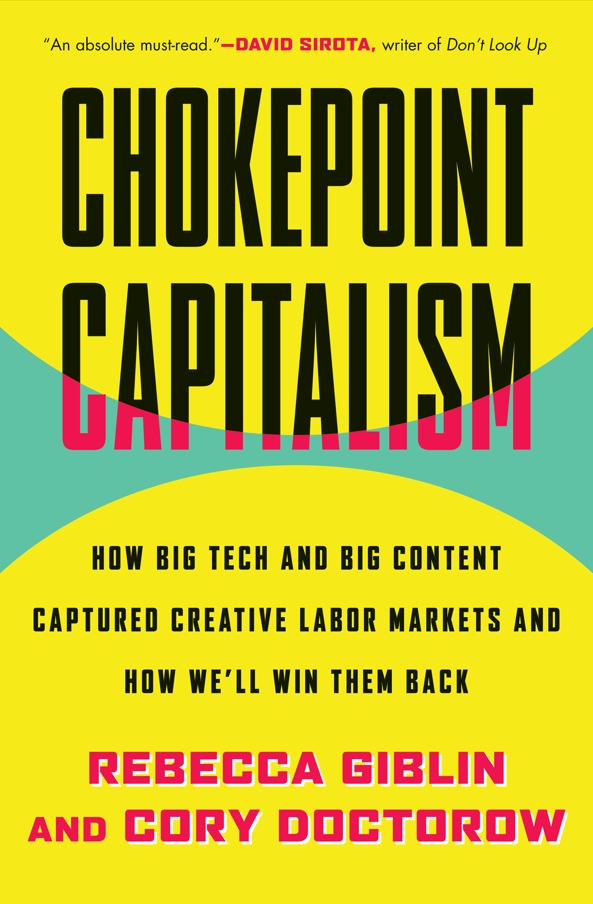An excerpt from a new book, Chokepoint Capitalism: How Big Tech and Big Content Captured Creative Labor Markets and How We’ll Win Them Back, highlights problems with streaming and the music industry.
Anybody who follows music knows that income from streaming is a joke unless you’re one of the most successful artists. The rates paid are usually governed by secretive private contracts—first between platforms and labels, then between labels and artists—so it’s difficult to get a clear picture of exactly what’s generated per stream. However, there are some windows into this opaque world. Independent cellist and composer Zoë Keating has been posting her streaming earnings data since 2012. In September 2019, for example, her music was streamed on Spotify over 200,000 times, for a payout of $753—about 36 hundredths of a cent ($0.0036) per play. That lets us make some ballpark deductions about what labeled artists might be getting. Even on a relatively generous royalty rate like 25 percent, it might be just 9 hundredths of a cent ($0.0009). And for those artists locked into decades-old contracts with, say, 6 percent royalties, it might take a hundred thousand plays to generate enough to buy a twenty-dollar pizza. That’s before tax. And, if they haven’t recouped their recording costs, none of these artists will see a dime.
Obviously then, making a success of streaming requires huge scale. That’s too bad for music that doesn’t lend itself to being listened to infinitely on repeat, a point repeatedly made by experimental musician and composer Holly Herndon. When commenting on a composition by Krzysztof Penderecki, she said, “Threnody to the Victims of Hiroshima is a really intense orchestral piece that has changed me musically, and really happy it exists, but I’m definitely not putting that on during a dinner party. You listen to it once and you gain access to the idea and you’re changed forever.” A few hundredths of a cent for a stream of nine minute track isn’t going to go far—especially distributed across an entire orchestra!
Herndon’s collaborator Mat Dryhurst also despairs of ever making money from streaming: “For album-making artists like us, where it’s really important you listen to songs 1 through 12, and we make one like every three years, the whole per stream payout thing doesn’t make any sense.” Most artists are in the same boat. Spotify won’t say how many are on its platform, but it’s in the tens of millions. A mere 43,000 of those are responsible for 90 percent of streams.
Streaming can probably never be a feasible way for lower volume artists and composers to make a living, but it doesn’t have to work this badly for them. The reason it does is because it was designed that way. As journalist and music commentator Liz Pelly told us, streaming “was shaped by the majors for the majors.” While streaming companies cop a lot of flak for these terrible outcomes (and we dig into their responsibility in the chapter that follows), it was the major labels who set the system up in the first place. Because they control so much catalog, anyone who wants to start a streaming service must go through them. That gives the Big Three the power to “operate without the usual rules that apply in highly competitive markets,” according to Gadi Oron of the International Confederation of Authors and Composers Societies, which represents almost 250 creator societies around the globe.
Not surprisingly, they created another winner-takes-all system that disproportionately benefits the very top artists and the very top labels. As David Turner explains, “oligopolistic strong-arming by major labels occurred with the emergence of each new streaming service, ensuring the royalty setup would be pro-label, not musicians.” That’s why their profits are ballooning even as their artists see their share plummet—recall from earlier that their income has recently increased by 21 percent, but profits by 64 percent. It’s not surprising that the CEO of the British Phonographic Industry (a trade association for record labels) told the UK parliamentary inquiry into the economics of music streaming that the “focus should be on growing the streaming pie rather than trying to argue over where that streaming pie should go.” Like Vegas stage magicians, they want us looking in the wrong direction to hide the sleight of hand that’s tipping so much of the value of music into their corporate coffers.
One structural feature that particularly advantages the majors is in the way royalties are divided up. All the major platforms operate a pro-rata system where the royalty money from all subscribers is pooled, then paid out by share of plays. If, say, Drake gets 5 percent of them, his label gets 5 percent of the money—even from subscribers who have never listened to one of his tracks.
Keating says this isn’t how fans think it works: “They think that if they are playing all Zoë Keating, that the portion of their subscription that is going to the artist is all going to me. But it’s not.” This pool system means those who listen less (perhaps because they’re fans of more challenging music, like Keating’s avant-garde classical, or Herndon and Dryhurst’s experimental electronic) end up funneling less money to their favorite artists than those who listen to unchallenging background music day in and out. French streaming platform Deezer says the pro-rata system hurts local and niche acts by giving popular artists and genres more than their fair share.
One response is to switch to a “user-centric” model. Instead of going into a single pool, the recording royalties component of each subscription (about 52 percent of the whole) would be distributed between the artists the user actually listened to. If a subscriber only listened to Keating that month, that full amount ($5.19 on a $9.99 subscription) would go to her. In effect, those who listen less would reward their preferred artists with higher royalties. Those who use music to background their days would deliver relatively less to each artist.
There has been only limited modeling of how user-centric payments would shift money, and the winners and losers are by no means clear-cut. Artist rights organizations like the UK Musicians’ Union are supportive but clear-eyed about user-centric systems: they don’t see them as a panacea, but think they could create more transparency and at least improve outcomes at the margins. Turner has criticized the model for being an individualistic solution, straight out of the neoliberal playbook: “This consumerist solution removes the responsibility to fairly compensate artists from record labels/streaming services and reassigns it to individual fans.” But he still says he’d welcome its adoption. “The shift would represent such a major pivot in how music streaming works and would allow for a much healthier conversation around the entire business model.”
Deezer has been trying to trial such a system for literally years, but resistance from the majors has prevented it from doing so. That suggests the biggest players are well aware they’re sucking away more than their fair share of value.
–
Excerpted from Chokepoint Capitalism: How Big Tech and Big Content Captured Creative Labor Markets and How We’ll Win Them Back by Rebecca Giblin and Cory Doctorow (Beacon Press, 2022). Reprinted with permission from Beacon Press.







